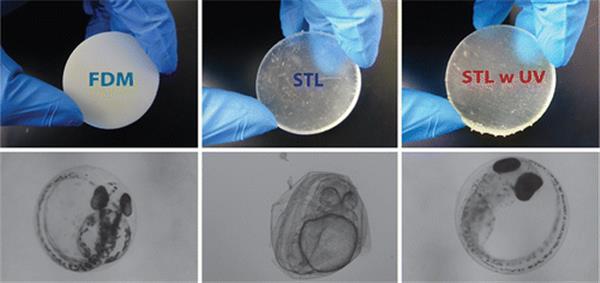With the rising popularity and increasing availability of 3D printers, it was inevitable that someone would start looking into the potential environmental impact presented by them. And now we have two researchers from the University of California Riverside sounding the alarm that certain plastics are toxic to zebrafish embryos (abstract only; full paper behind a paywall).
As is often the case with science, this discovery was serendipitous. Graduate student [Shirin Mesbah Oskui] was using 3D printed tools to study zebrafish embryos, a widely used model organism in developmental biology, but she found the tools were killing her critters. She investigated further and found that prints from both a Stratasys Dimension Elite FDM printer and from a Formlabs Form 1+ stereolithography printer were “measurably toxic” to developing zebrafish embryos. The resin-based SLA printed parts were far worse for the fish than the fused ABS prints – 100% of embryos exposed to the Form 1+ prints were dead within seven days, and the few that survived that long showed developmental abnormalities before they died. Interestingly, the paper also describes a UV-curing process that reduces the toxicity of the SLA prints, which the university is patenting.
Of course what’s toxic to zebrafish is not necessarily a problem for school kids, as the video below seems to intimate. Still, this is an interesting paper that points to an area that clearly needs more investigation.











